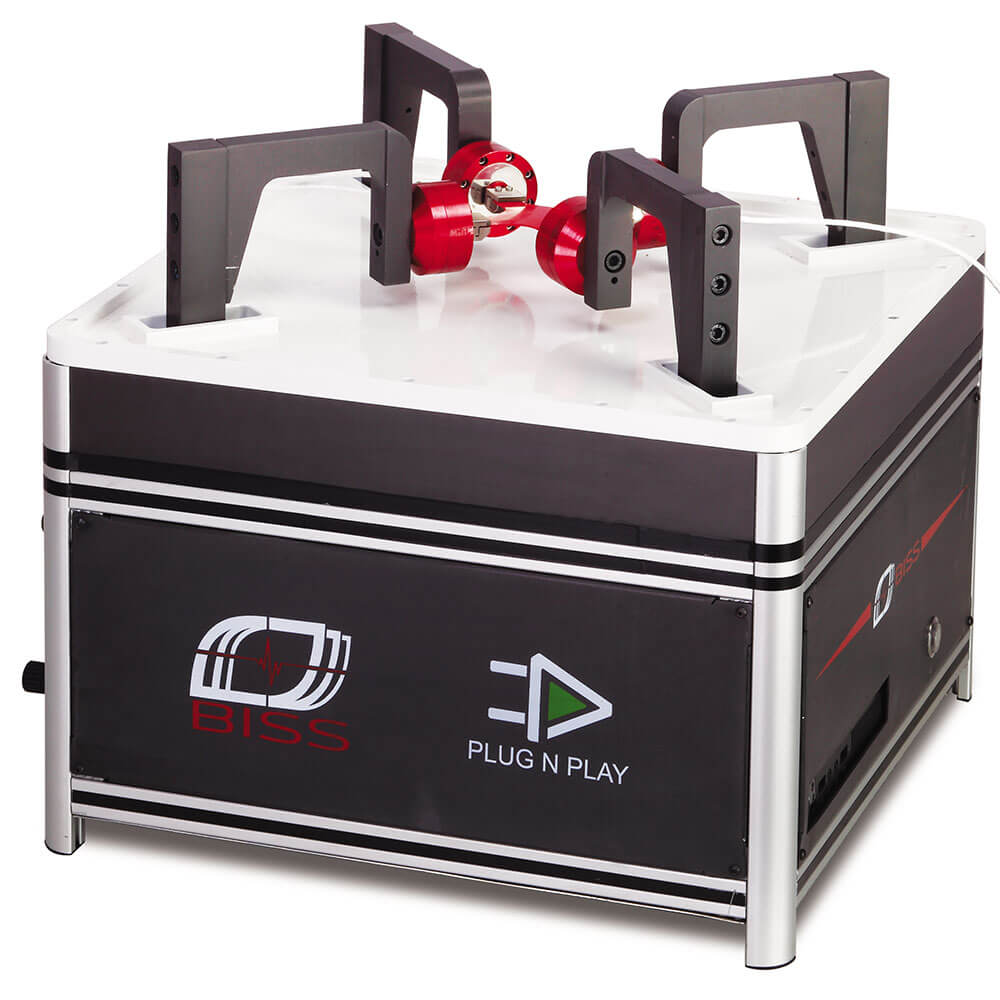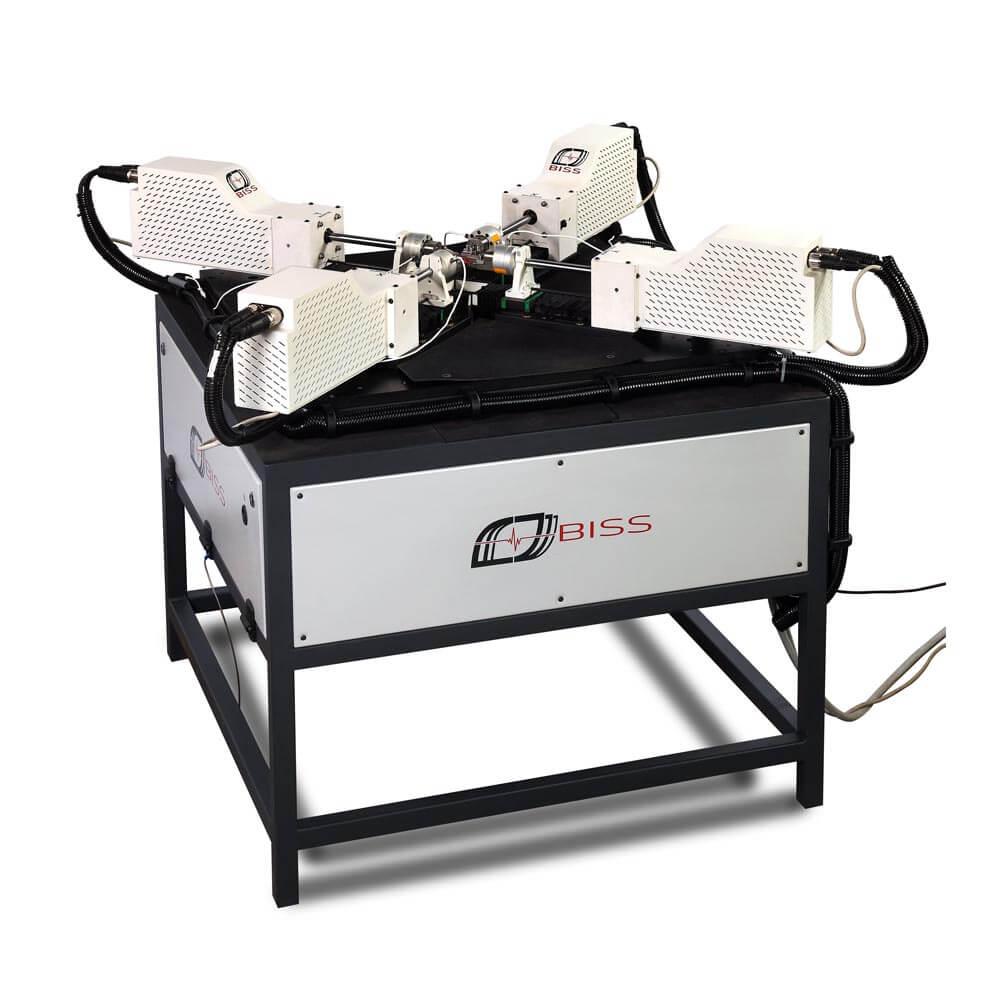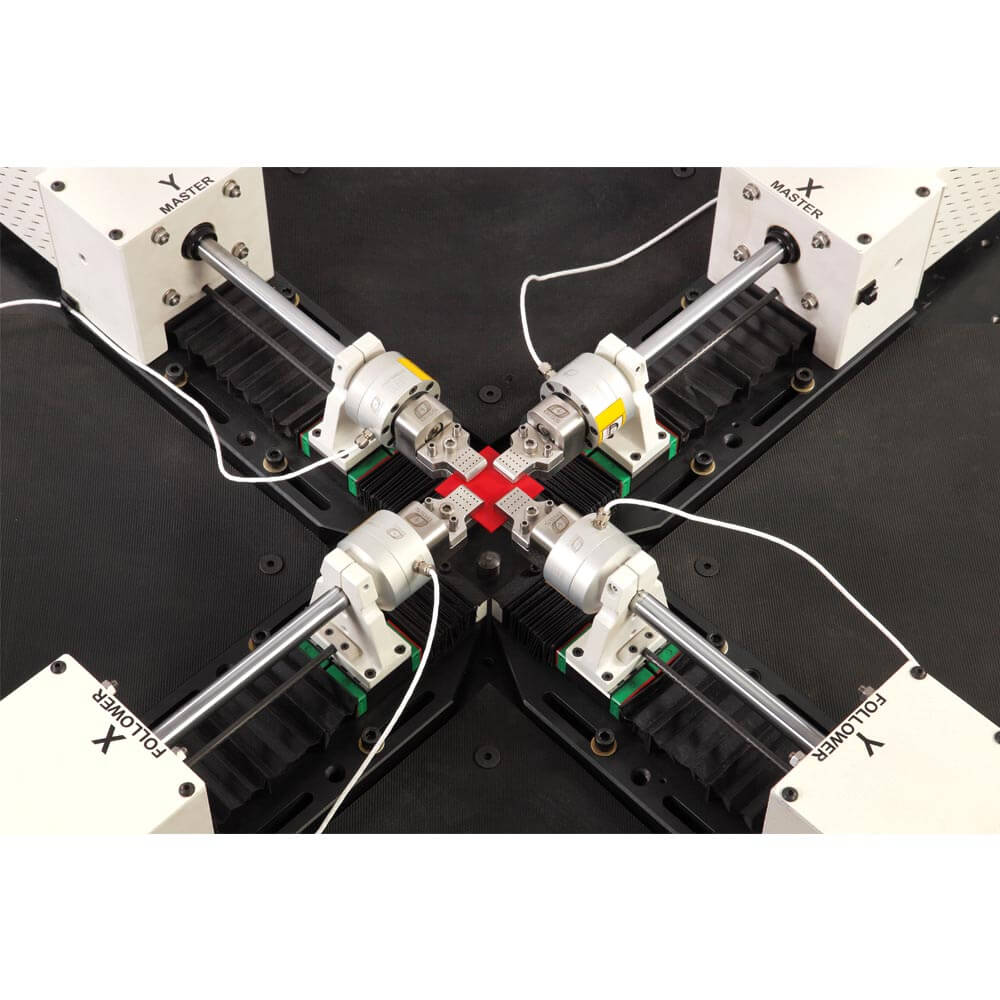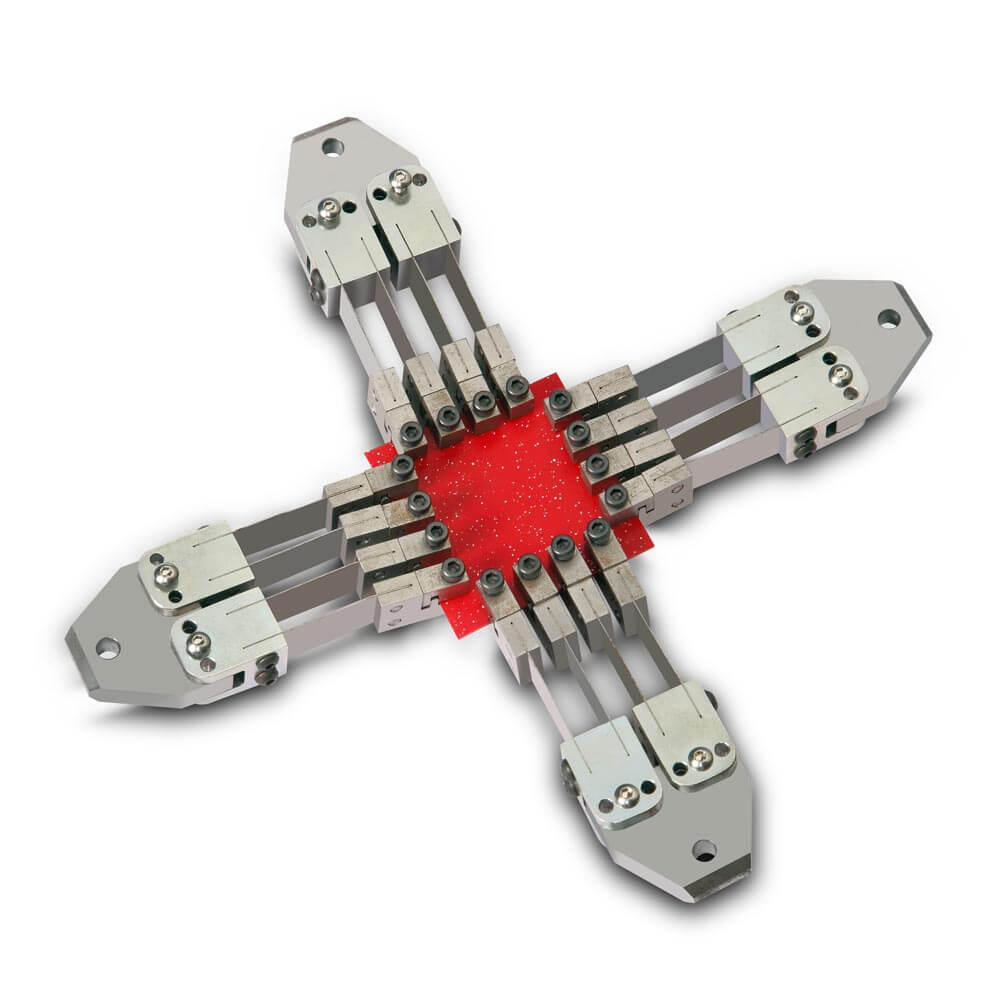
- Home
- Products
Systems
Accessories
- Grips And Fixtures
- Actuators
- Applications
BY Material
By Test Methods
- Our Company
- News
- Blog
- Support
- Media Centre |||
PLANAR BIAXIAL TEST SYSTEM
Most practical situations involve multi-axial loading. For example, any pressure vessel will see biaxial loading from the axial and hoop stress components. A planar biaxial test system consists of four servo-actuators positioned at right angles to each other on a free-standing self-reacting load frame. Planar biaxial test systems differ from axial-torsion systems. They involve the use of cruciform shaped specimens.
Planar biaxial testing poses a number of challenges in that the two axes of loading should be amenable to precise independent control in the desired mode (Stroke, Load or local (axial) strain response) and with desired distribution of load and phase lag between the two axes. Another challenge is to restrict loading to strictly biaxial, without any shear component whatsoever that may not only distort the desired stress state, but also threaten unintended damage to the specimen outside the gauge area.
The conventional approach to meeting this requirement is to drive opposing actuators in so called ‘Master-Slave’ mode, whereby the Slave tracks the position of the Master actuator, resulting in unchanged position of the perceived specimen center.
Features
- Self reacting biaxial horizontal load frame
- 600 x 800 mm daylight for gripping area
- Linear bearings to protect the load cell and actuators from side loads
- Servo electric actuator assembly with 1 kN force and 30mm stroke rating
- Rated for dynamic application up to 5 – 10 Hz
- Maximum speed of 0.1 m/s with built in optical encoder with a resolution of 0.001 mm
- Load cell of 1 kN dynamic capacity
- Multi channel control system & hardware
- Biaxial video extensometer (optional)




